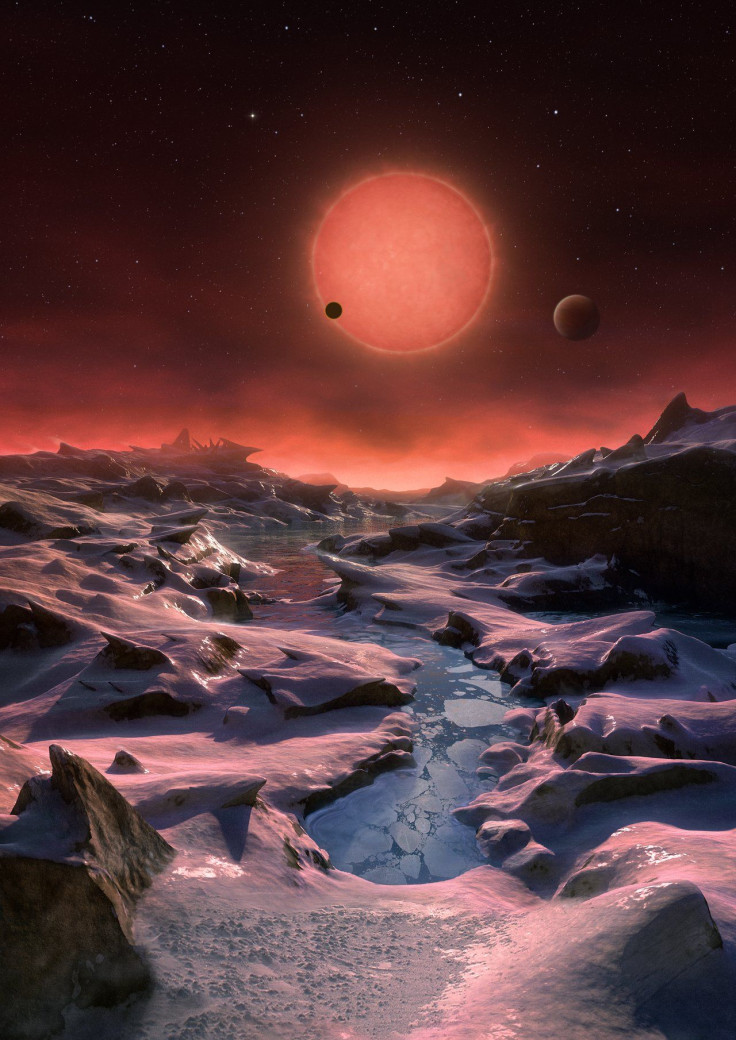Hunt For Alien Life: Potentially Habitable Earth-Sized Exoplanets Found Around Nearby Dwarf Star

At first glance, TRAPPIST-1 may seem like another run-of-the-mill “ultracool” dwarf star — one that is much cooler than our sun and barely larger than Jupiter. While the star may be insignificant in the cosmic scale of things, for denizens of Earth, it holds a special distinction — three planets with sizes and temperatures similar to those of Venus and Earth have now been discovered in orbit around it.
“This really is a paradigm shift with regards to the planet population and the path towards finding life in the Universe,” Emmanuël Jehin from the University of Liège, Belgium, who co-authored a study detailing the discovery, said in a statement Monday. “So far, the existence of such ‘red worlds’ orbiting ultra-cool dwarf stars was purely theoretical, but now we have not just one lonely planet around such a faint red star but a complete system of three planets .”
The planets around this star — located just 40 light-years from Earth — were discovered using the TRAPPIST (TRAnsiting Planets and PlanetesImals Small Telescope) located at La Silla Observatory in Chile. During several months of observations, scientists detected periodic dimming of light from the star, suggesting that something was passing between it and Earth.
Follow-up observations conducted using the Very Large Telescope in Chile confirmed that the dimming was in fact caused by planets orbiting the star.
These planets are all Earth-sized. The two inner planets have orbital periods of about 1.5 days and 2.4 days, respectively, while the third planet’s orbital period could lie anywhere between 4.5 to 73 days.

“With such short orbital periods, the planets are between 20 and 100 times closer to their star than the Earth to the Sun. The structure of this planetary system is much more similar in scale to the system of Jupiter’s moons than to that of the Solar System,” lead author Michaël Gillon from the University of Liège, said in the statement.
However, since the star is fainter and cooler than our sun, the surface temperatures of these planets may lie within a range that is needed for the presence of liquid water.
Although the inner two planets lie outside the so-called Goldilocks, or habitable, zone of the star system, scientists believe that life may exist on their dark sides. The orbit of the outer planet, meanwhile, is not yet well-known, but researchers estimate that it receives less radiation than the Earth does and could either be warm enough to have liquid water, or be a cold and frigid icy world.
“These planets are so close, and their star so small, we can study their atmosphere and composition, and further down the road, which is within our generation, assess if they are actually inhabited,” co-author Julien de Wit from the Massachusetts Institute of Technology said in a statement. “All of these things are achievable, and within reach now. This is a jackpot for the field.”
© Copyright IBTimes 2024. All rights reserved.












